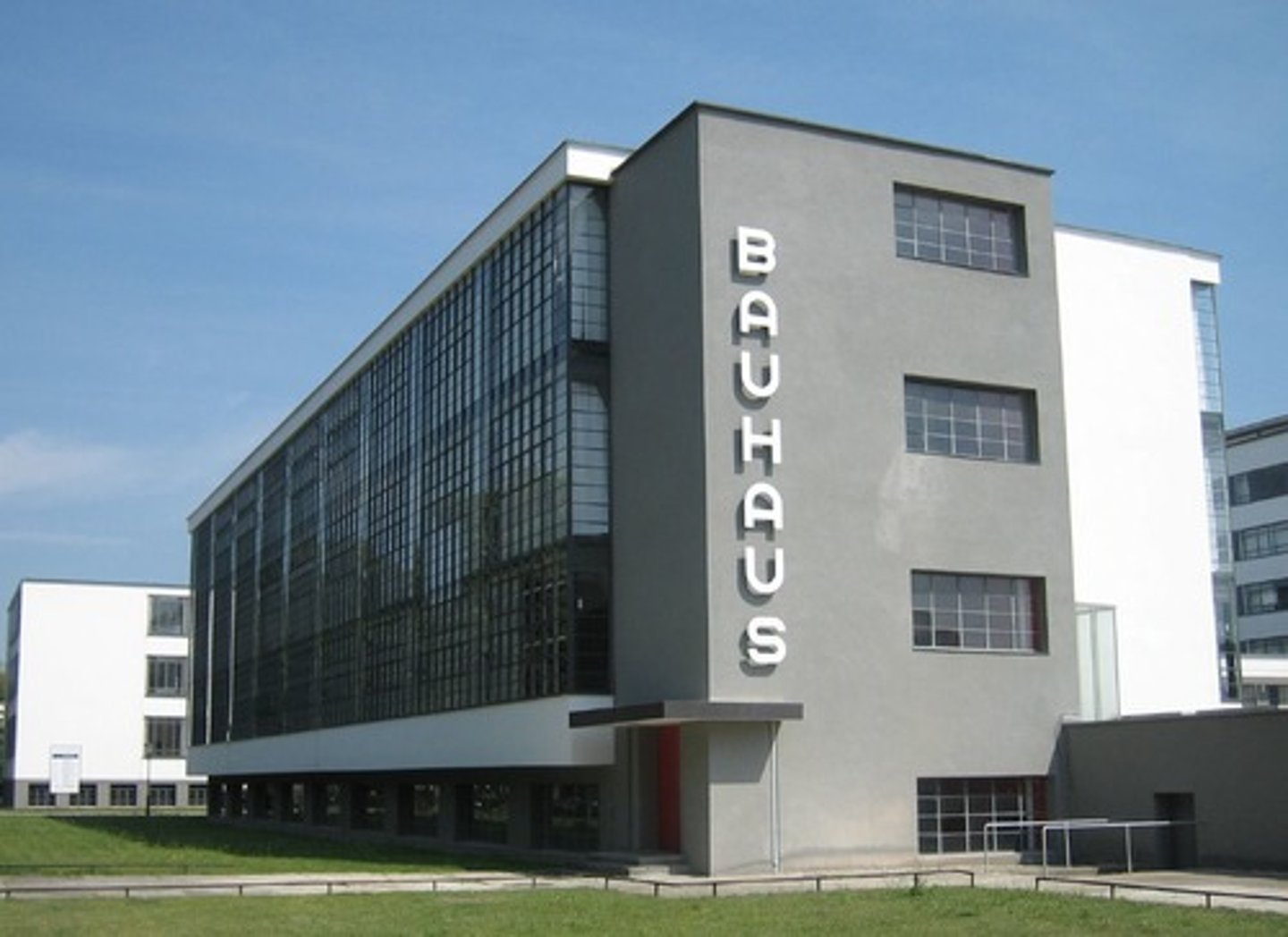History of Industrial Design Section 3
1/46
There's no tags or description
Looks like no tags are added yet.
Name | Mastery | Learn | Test | Matching | Spaced |
|---|
No study sessions yet.
47 Terms
Art Nouveau
A design movement from 1883-1914 characterized by curvilinear forms and asymmetry.
- international style
Had different names all over the world
Vienna Secession
Austria's Art Noveau
Josef Hoffman
Gustav Klint
Otto Wagner
Koloman Moser
Vienna Secession Building
Architect: Joseph Maria Olbrich
Represents the movement
Built in 1898 to exhibit Secessionist works.
frieze by Koloman Moser

Beethoven Frieze
A work by Gustav Klimt created for the 14th Vienna Secessionist exhibition in 1902.
Gorilla represents Typhoeus = typhoid
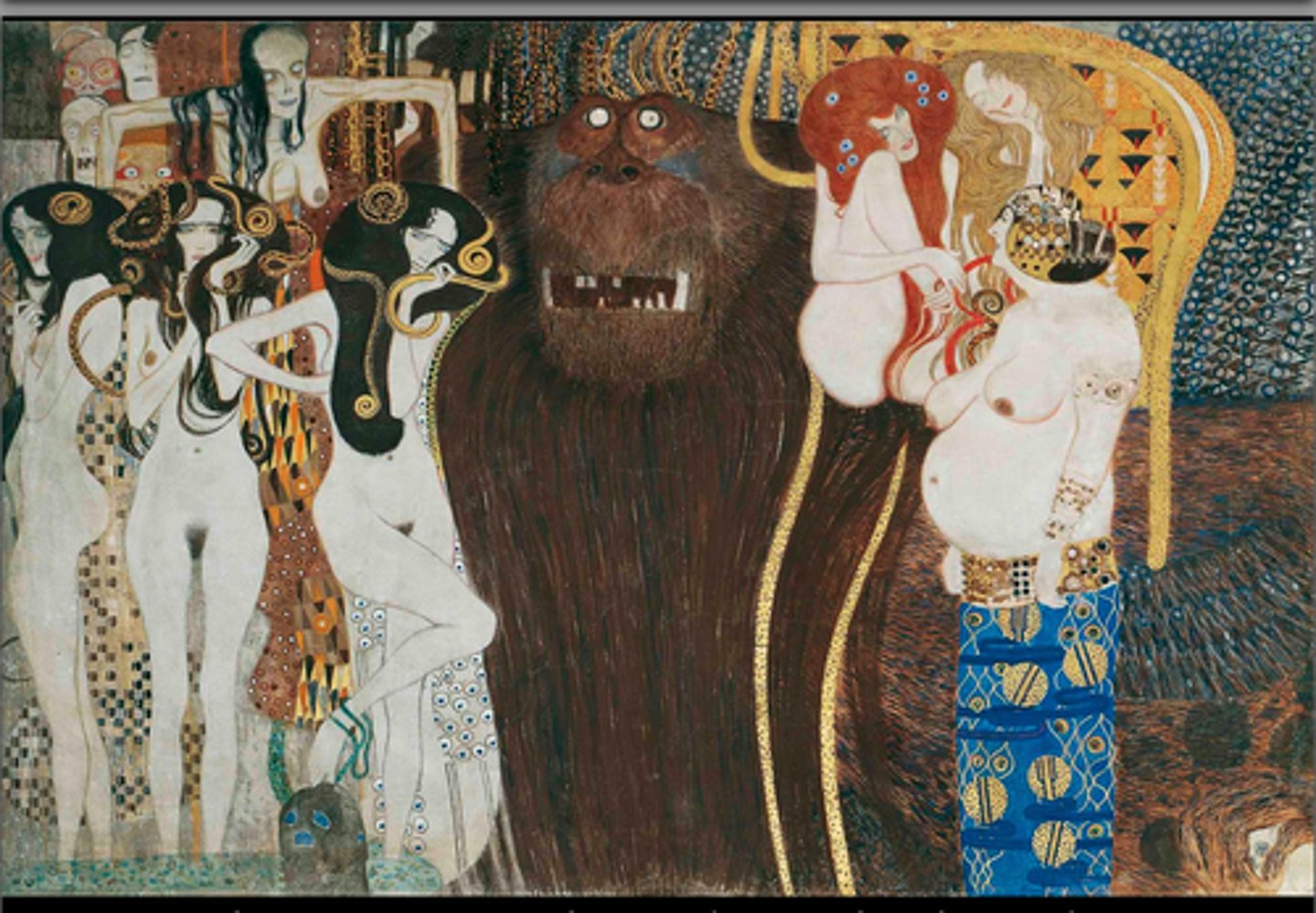
Josef Hoffman
Architect and Industrial Designer
A Secession of Vienna Founder
Work was a bridge between Art Deco and Modernism
Inspired by Mackintosh
Wiener Werkstätte
Founded by Josef Hoffmann and Koloman Moser. "Vienna Workshop"
group of artists and artisans that produced everyday items like ceramics, furniture, and metal work
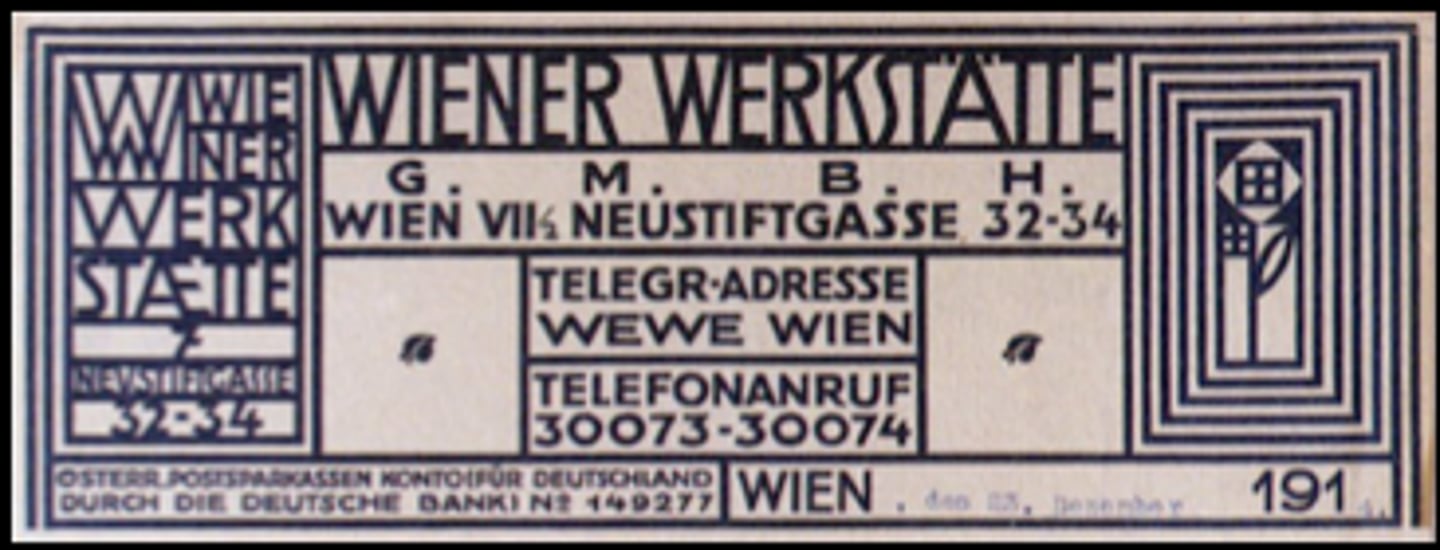
Adolf Loos
An architect known for his essay 'Ornament and Crime', advocating for simplicity in design.
Gingerbread example in class
Purkersdorf Sanatorium
A sanatorium designed by Josef Hoffmann in 1904 for tuberculosis patients, emphasizing fresh air and light.
he also designed some of the furniture within

Dining Chair for Sanatorium
Josef Hoffman
uses wooden spheres to secure corner joints
decorative way to highlight structure

Sitzmaschine
Josef Hoffman
"machine for sitting"

Kubus Chair
Josef Hoffman
Similar to Stickley's Cube Chair

Peter Behrens
An architect and designer, known as the 'first modern industrial designer' and a founder of the Deutscher Werkbund.
Wanted to use new technologies to achieve character - beyond function
AEG
Allgemeine Elektricitäts-Gesellschaft
General Electric Company
bought Edison's light bulb patents and became a top electrical company
created new model for mass-production factory setting
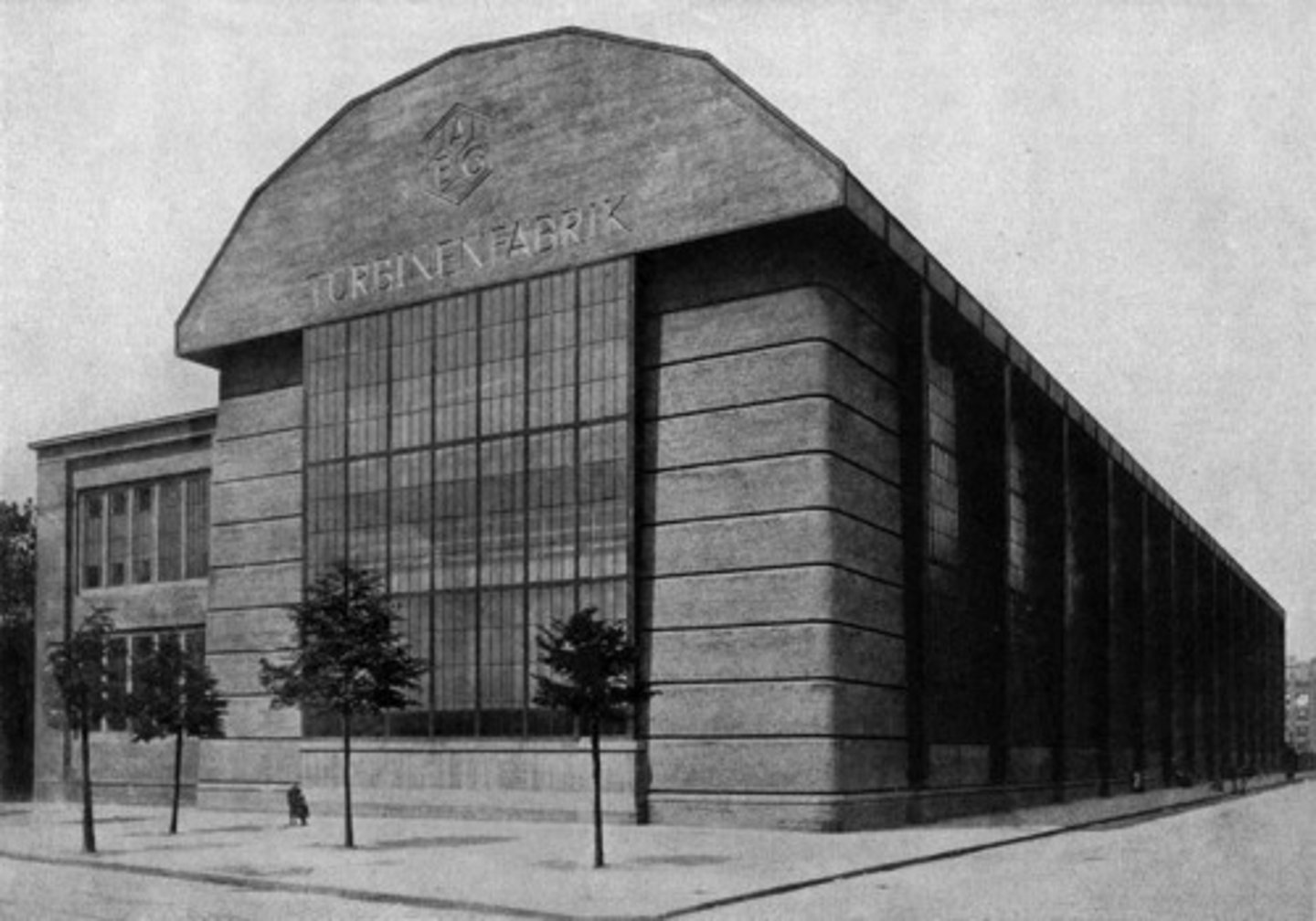
Peter Behrens fan
Cast iron and brass
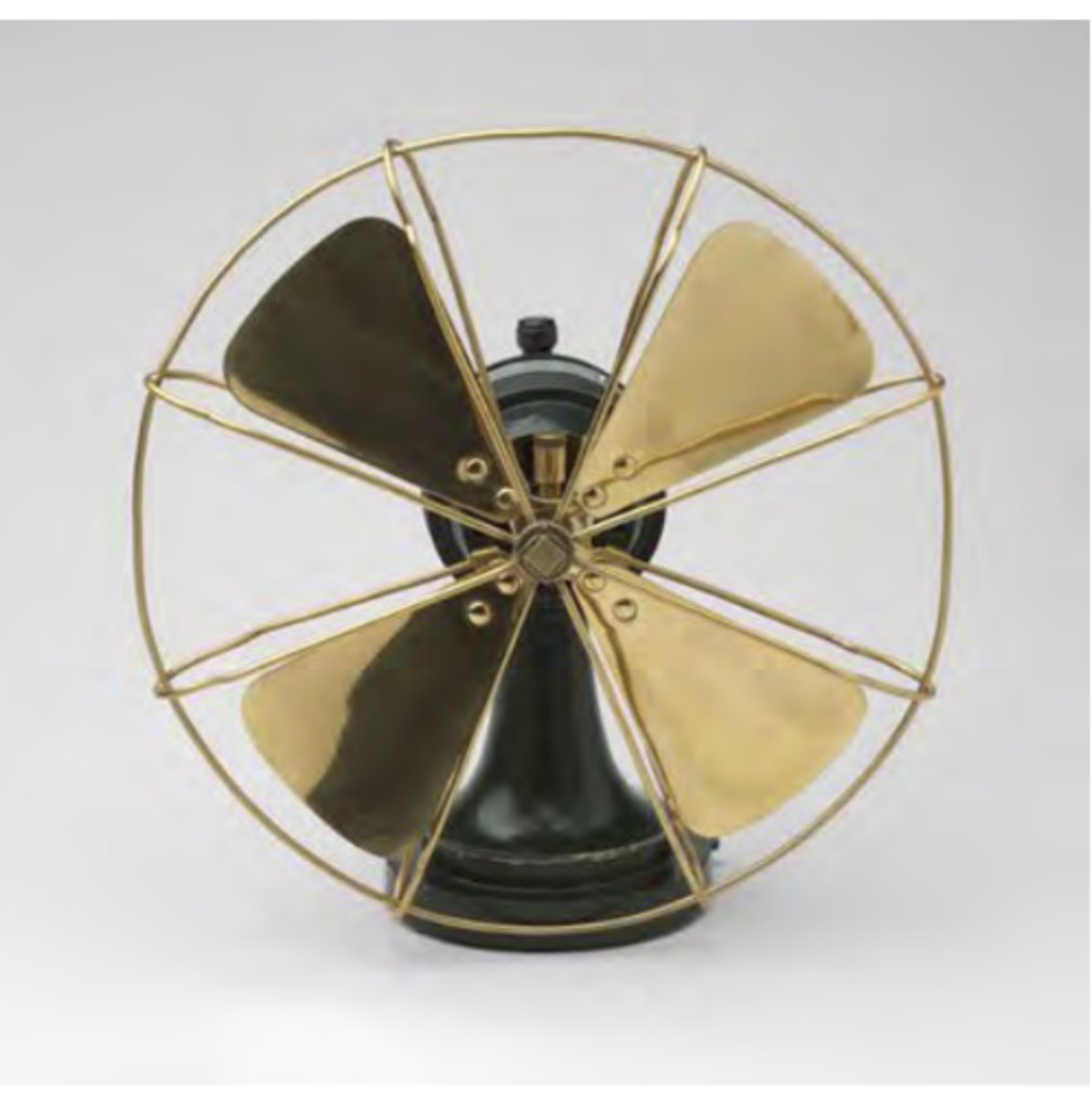
Peter Behrens Electrical Kettle
was more expensive and slower than competition but company rep made it sell more
used traditional tea pot form for familiarity to ease consumers into change
hidden electrical heating element within the body
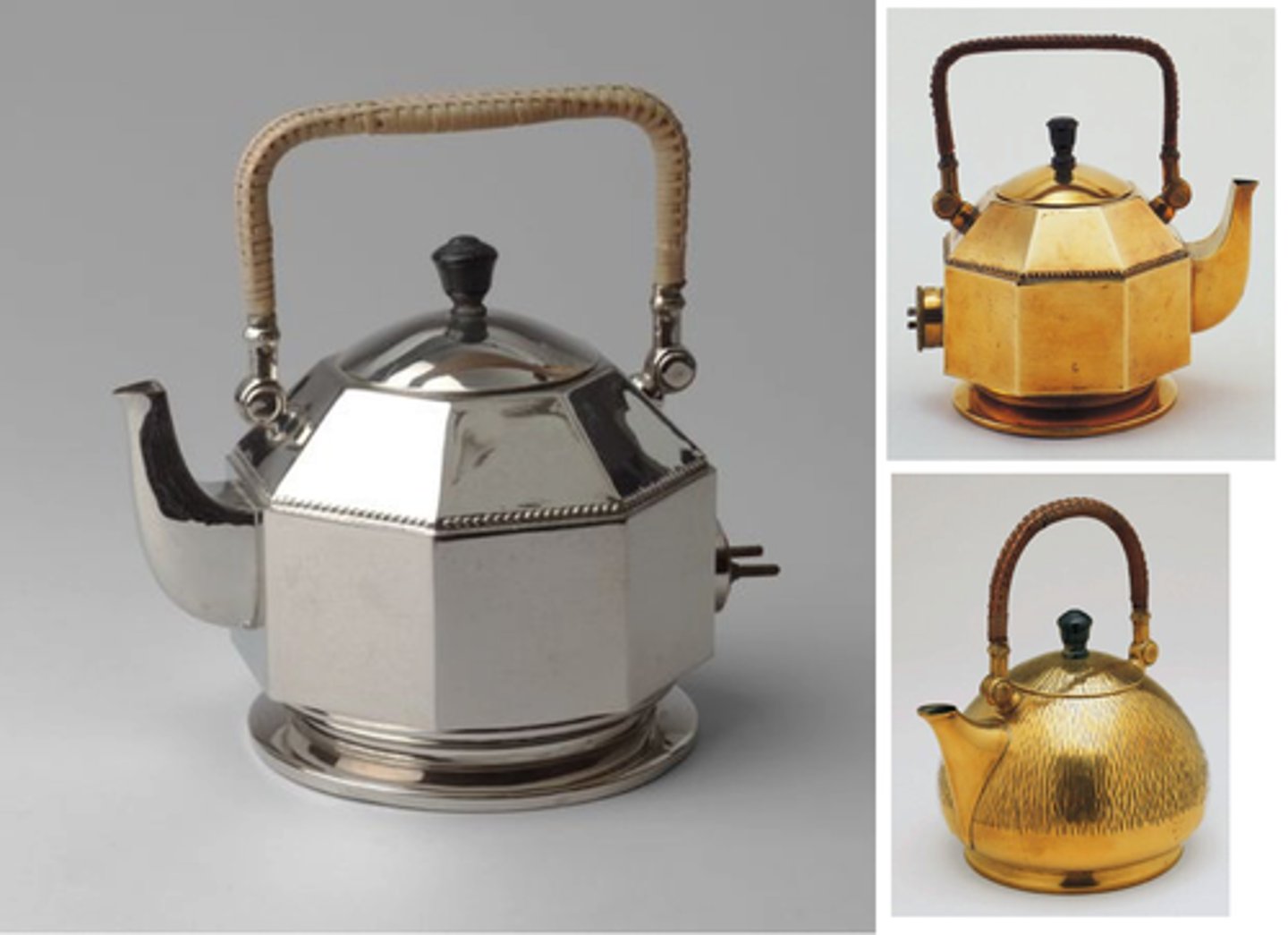
Carl Benz
created first automobile and first series of them
patent for "vechile powered by gasoline"

Model T Ford
An affordable car produced from 1908-1927, costing $825 in 1908 (equivalent to $26,500 today).
Ford wanted workers to be able to afford it
it was kind of a stunt car, remember it driving up stairs?
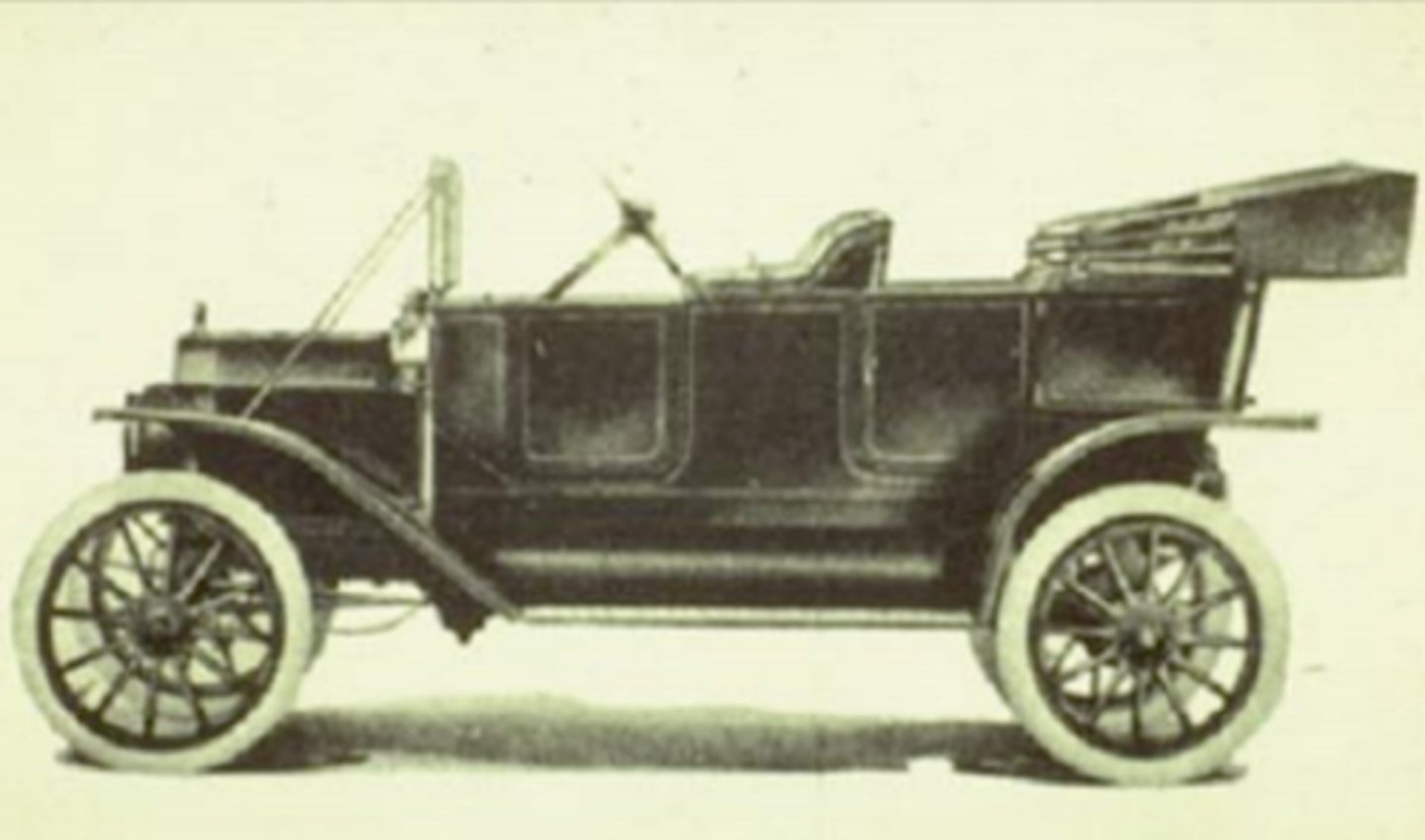
Moving Assembly Lines
Henry Ford introduced in 1913
Allowed a car to be made in an hour and a half instead of over 12 hours.
De Stijl
"The Style"
A Dutch artistic movement from 1917-1930
Abstracting forms, stripping them down
Grid, 2D to 3D
yellow, red, blue, black, white, gray
Piet Mondrian
Major figure for De Stijl
lots of grid and line work, blocks of color

Theo van Doesburg - and a notable work
Major figure for De Stijl
The Cow 1918
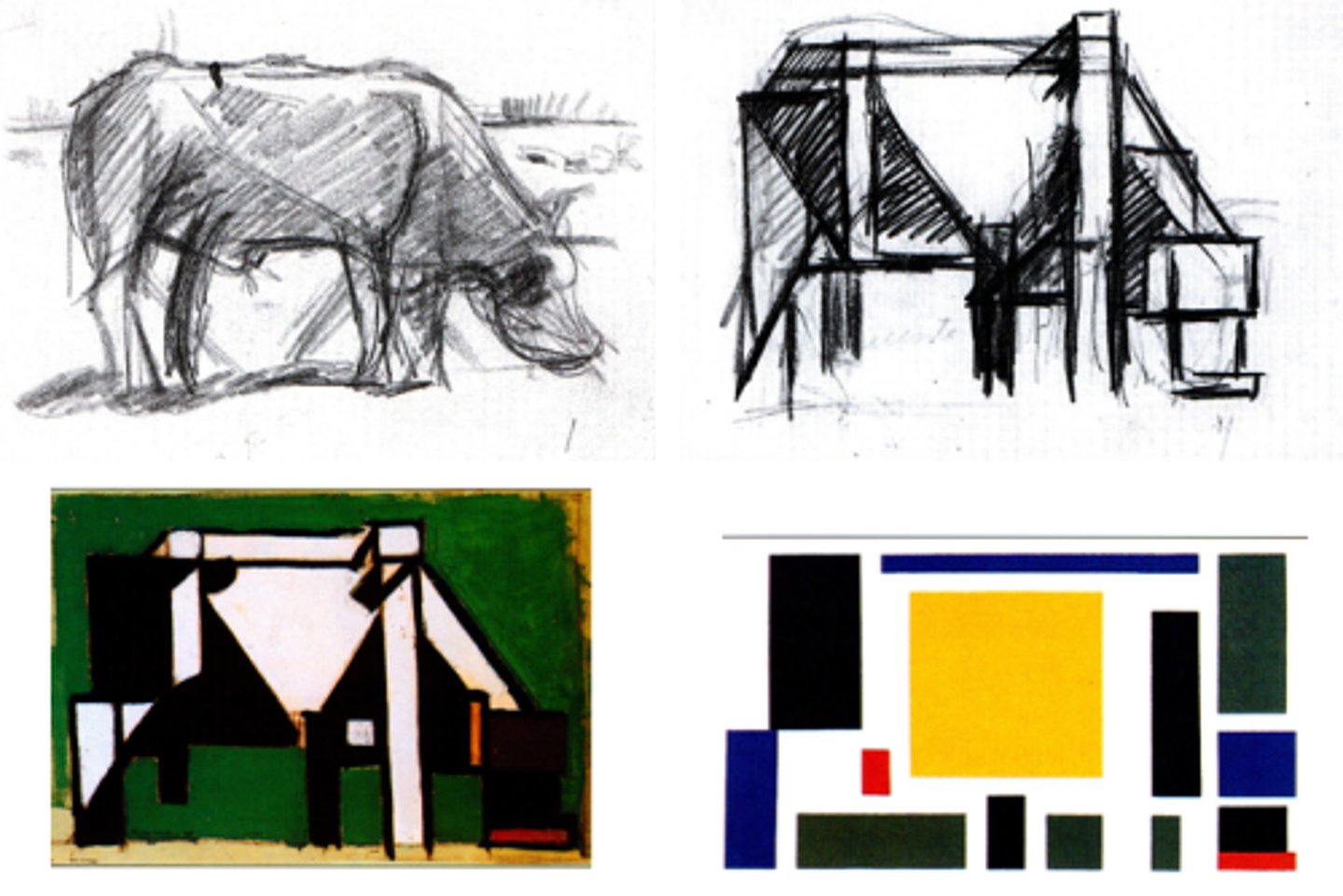
Gerrit Rietveld
Major figure for De Stijl
apprenticed his father who was a joiner
opened his own furniture shop at 29
Bend
Fold
Interlock
Wrap
Perforate
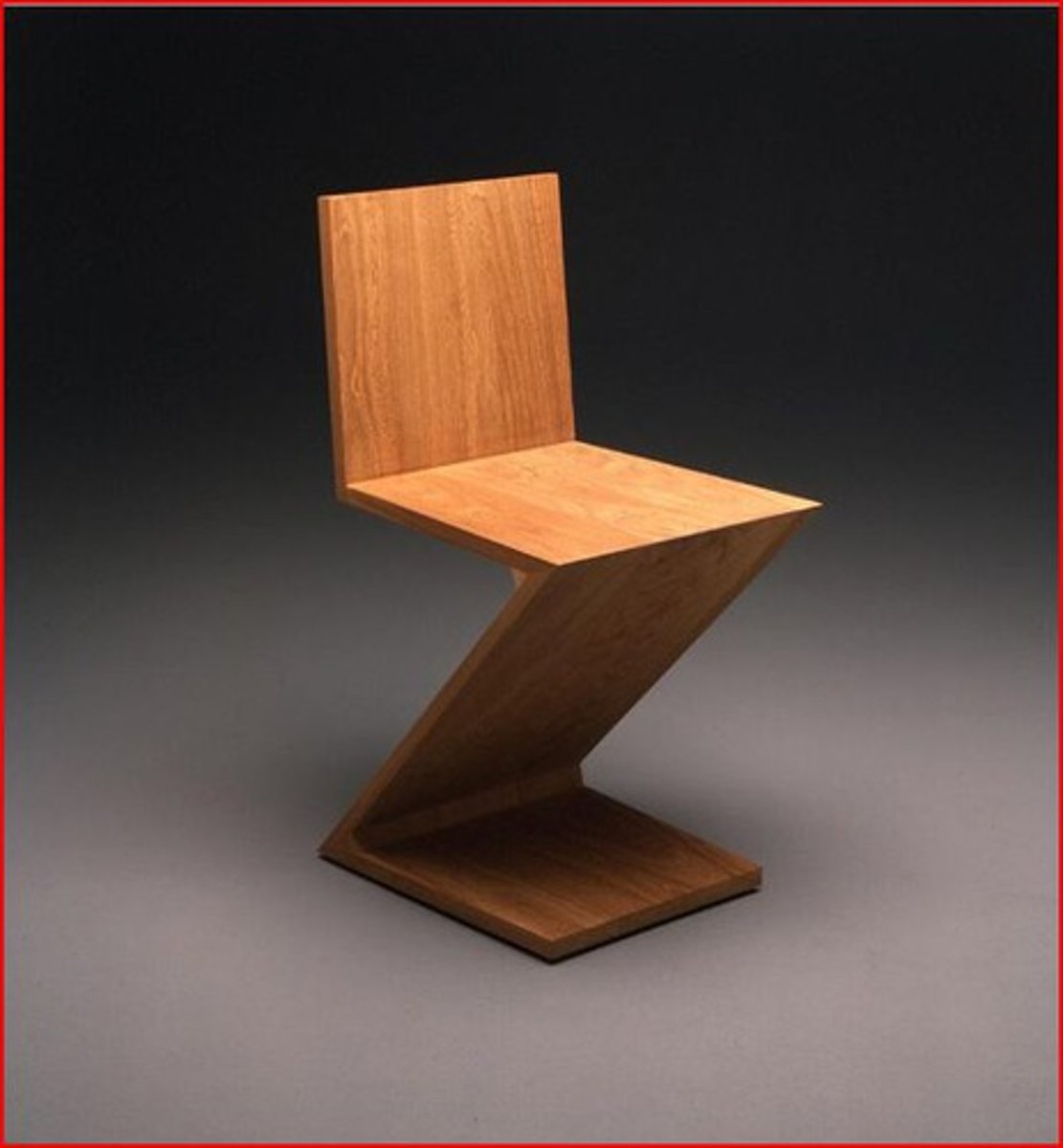
Rietveld Schröder House
1924 house designed for Truus Schröder in Utrecht.
House as instrument
Transforms based on needs: sliding doors, operable skylight, hidden staircase, removeable window panels

Red Blue Chair
Rietveld
Iconic chair made from five-ply beech plywood.
hidden connections made with dowel pins
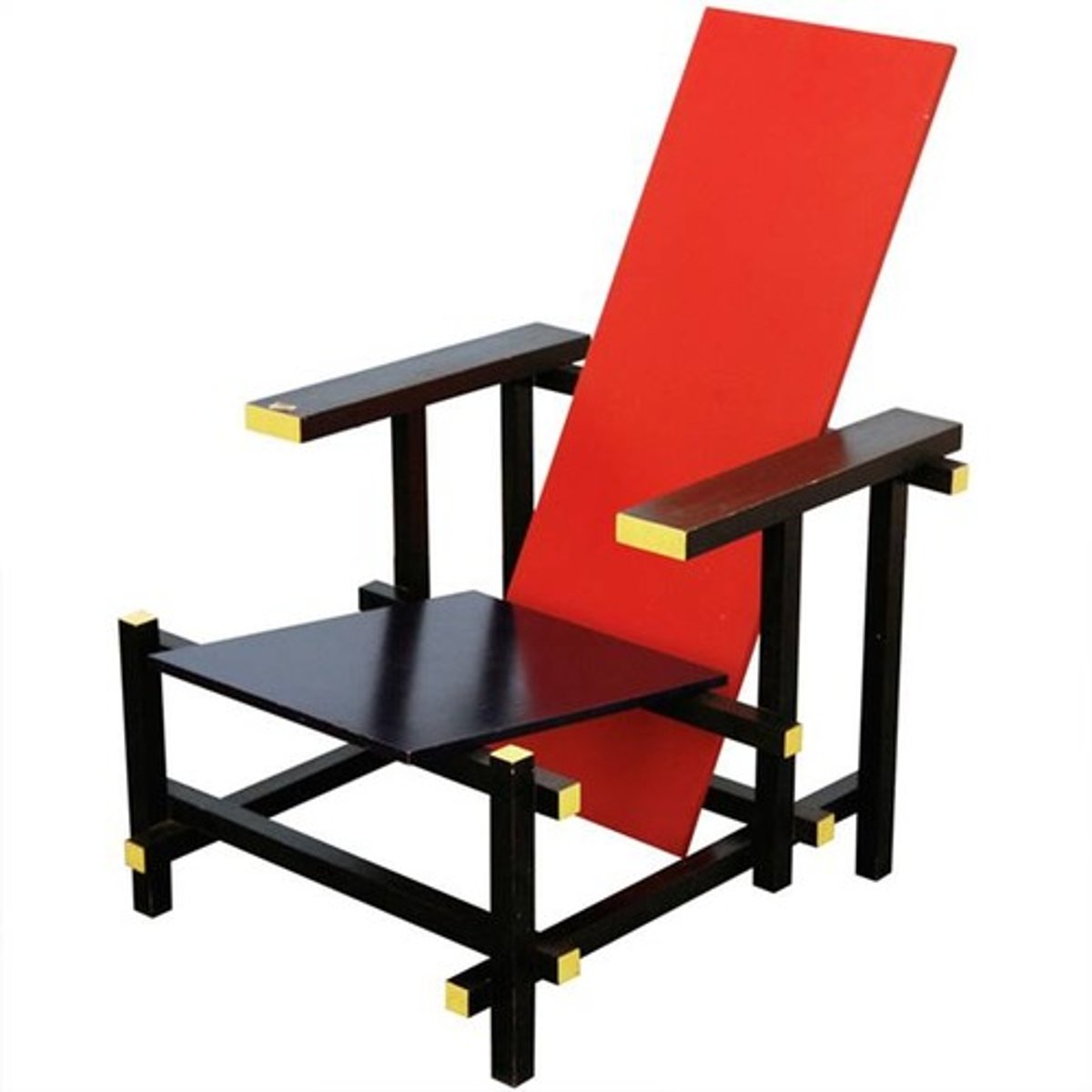
Tube-framed Chairs
Rietveld
Chairs designed with bent steel rods for mass production.
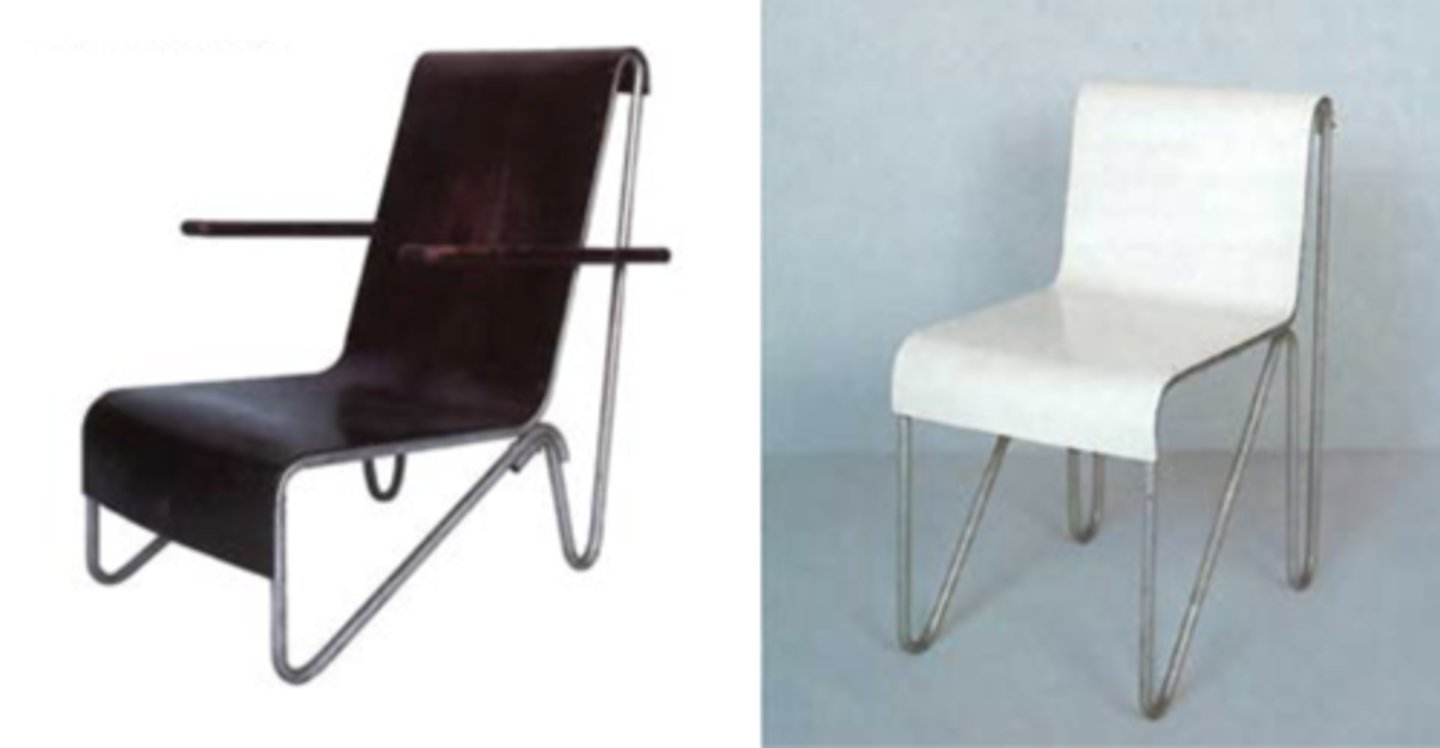
Handkerchief chair
Vignellis
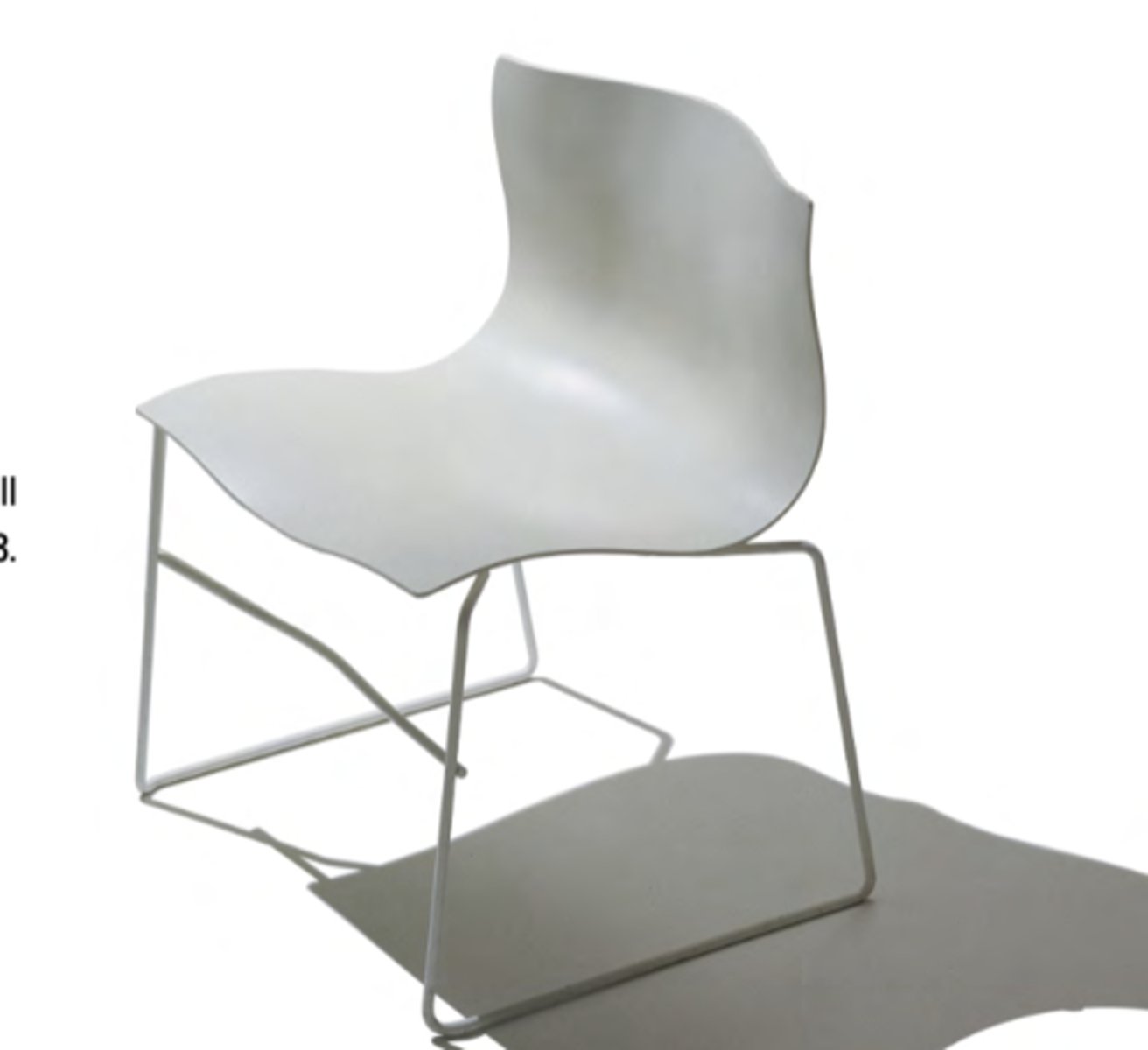
Steltman Chair
Rietveld
oak
Chair with each leg directionally different.
axis (x,y,z) shifts give feeling of rotation
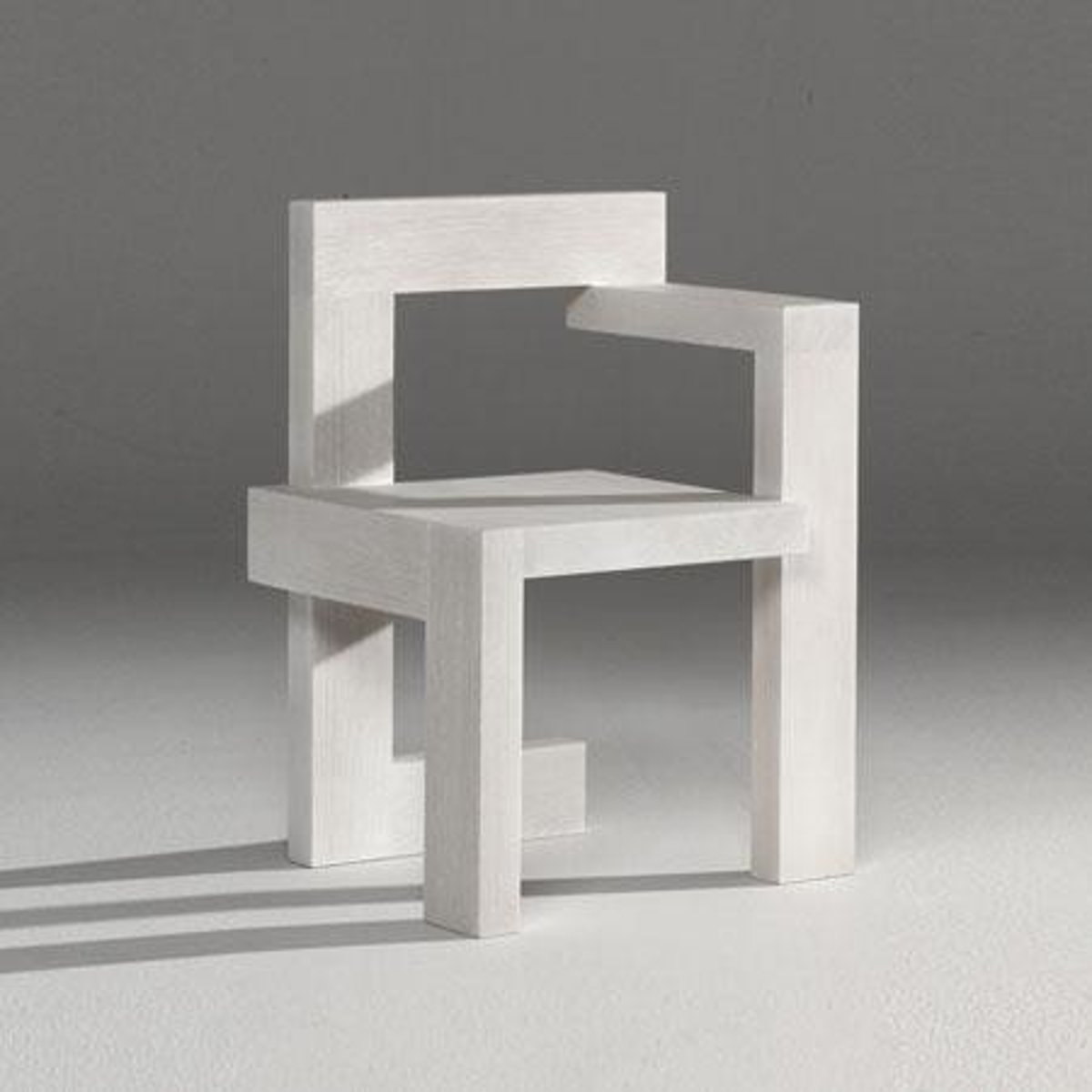
Bauhaus
"House of Building"
1919-1933 school combining design, craft, and technology.
range of arts from sculpture and painting to architecture
Initially designed the Bauhaus
Henery Van de Velde
Bauhaus Directors
1st - Walter Gropius (did the most)
2nd - Hannes Meyer
3rd - Ludwig Mies van der Rohe
Walter Gropius
Founder and first director of the Bauhaus.
Architect, designer, educator
Director of joinery workshop
Designed new Bauhaus buildings in Dessau
2 types of Mentors in Bauhaus
Master of Form and Master of Craft
Johannes Itten
Bauhaus educator known for color theory.
Created Foundations Programming
Teachings based on opposites: heavy/light, round/square, rough/smooth
Wassily Kandinsky
Painter, Educator
mural painting workshop
painting courses
abstract form elements
analytical drawing
Theo van Doesburg
Painter, architect, writer, educator
taught De Stijl at Bauhaus - super influential movement
influenced students who became faculty like Marcel Breuer
Marcel Breuer
Architect and educator student and then faculty at Bauhaus
First tubular steel chair
Josef Albers
Painter and art theoretician
taught prelim courses on design and materials
investigated colors and their optical effects
Has 2 works on RIT campus:
-Mural George Eastman Lobby
- Brick Wall in Gosnell
Josef Albers Tea Cup
Handles make it seem inspired by Greek Feeding Cup
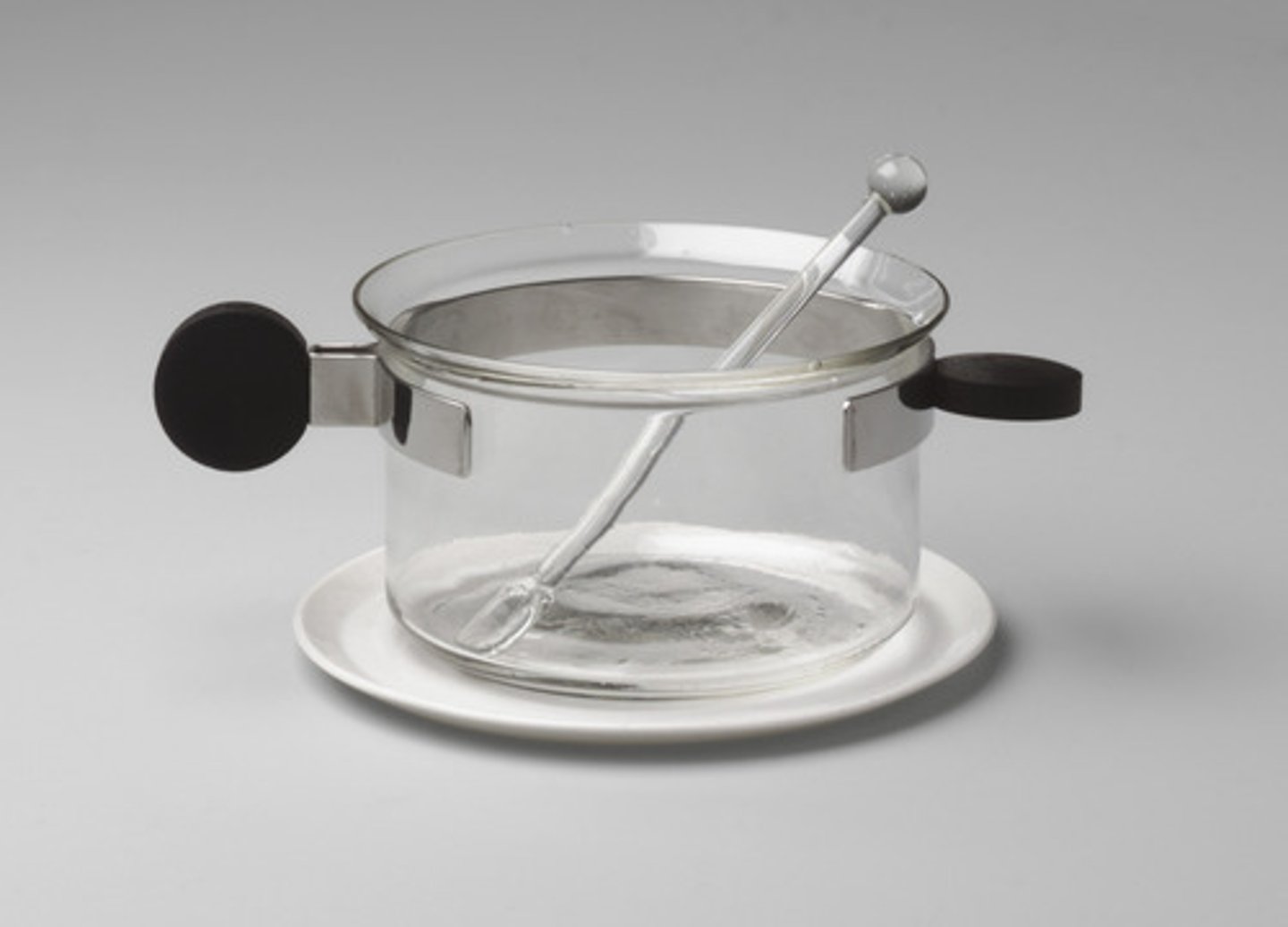
Herbert Bayer
Graphic designer, Educator
Student and then faculty at Bauhaus
created universal sans-serif typeface associated with Bauhaus

Marianne Brandt
Student and then director of Bauhaus Metal workshop
worked in Gropius' Architecture office
Metal designer known for geometric functional objects.
Silver Tea Service
Marianne Brandt
uses of simple geometry

Small tea-essence pot
Marianne Brandt

Ludwig Mies van der Rohe
3rd and final Bauhaus Director
Architect and Educator
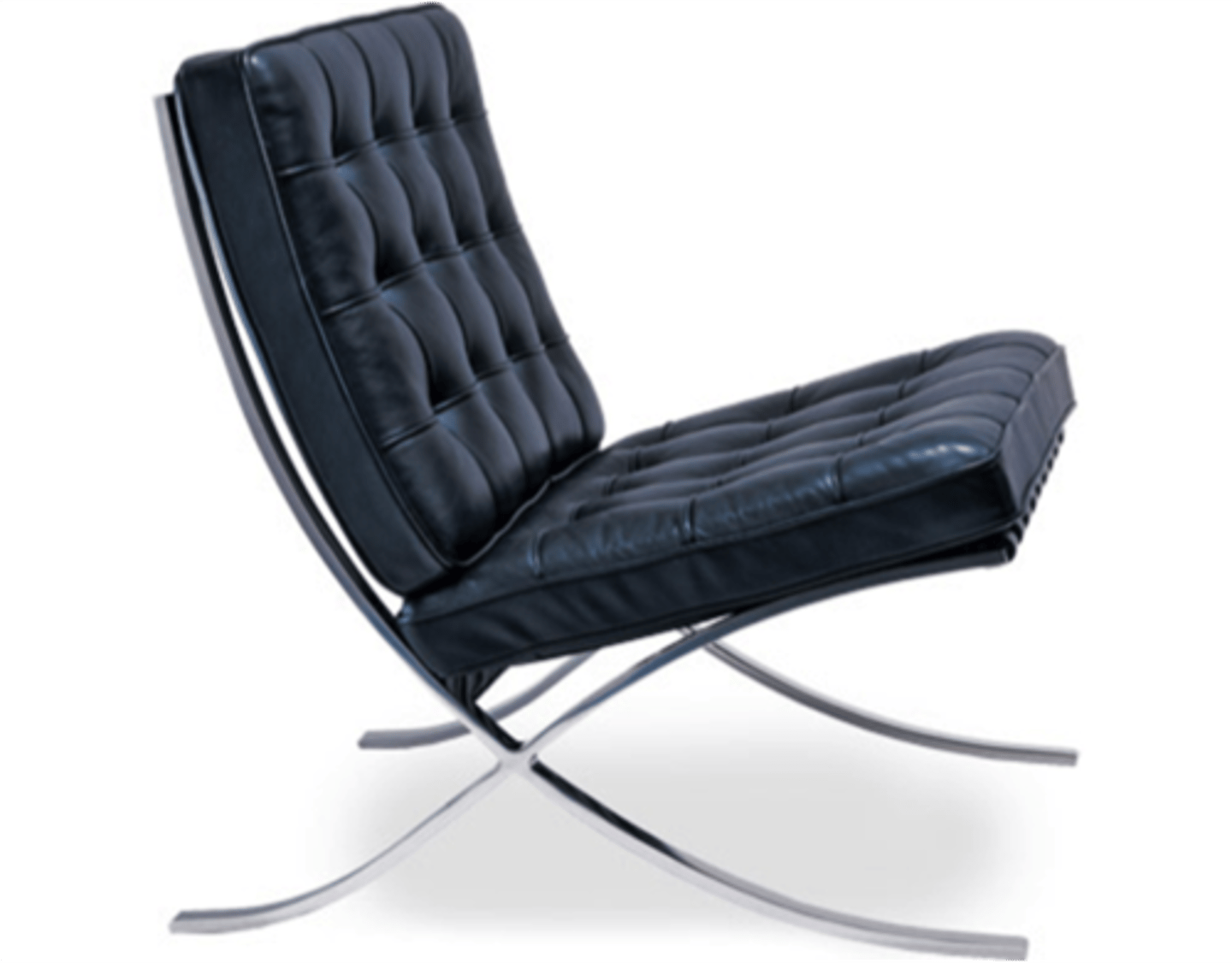
Lilly Reich
Interior Designer and Educator
worked for Josef Hoffman
László Moholy-Nagy
Bauhaus faculty member, known for photography and design.
Replaced Itten at Bauhaus when he became too spiritual
Founded new Bauhaus in Chicago
produced experimental films
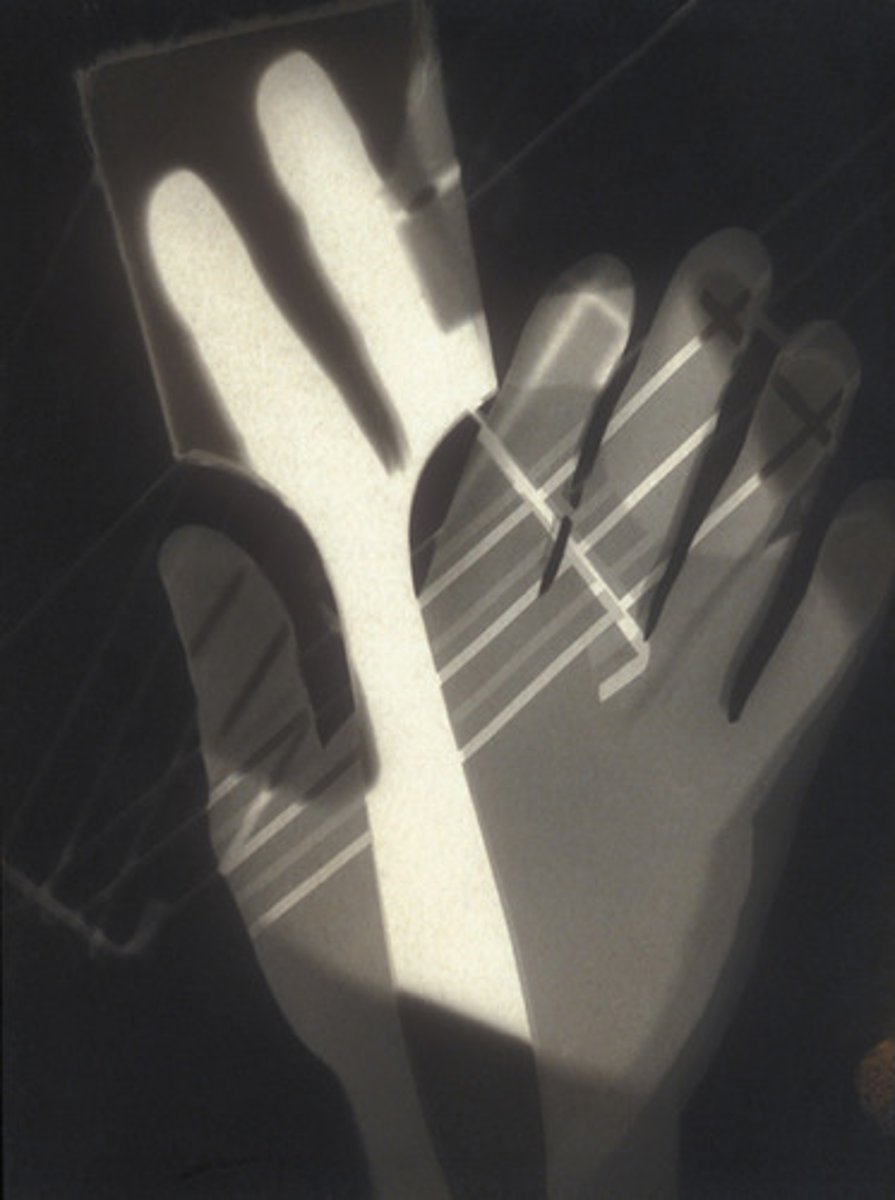
Josef Hartwig
Faculty of Bauhaus Woodworking
Designer of chess set reflecting movement in design.
One of the most successful Bauhaus products
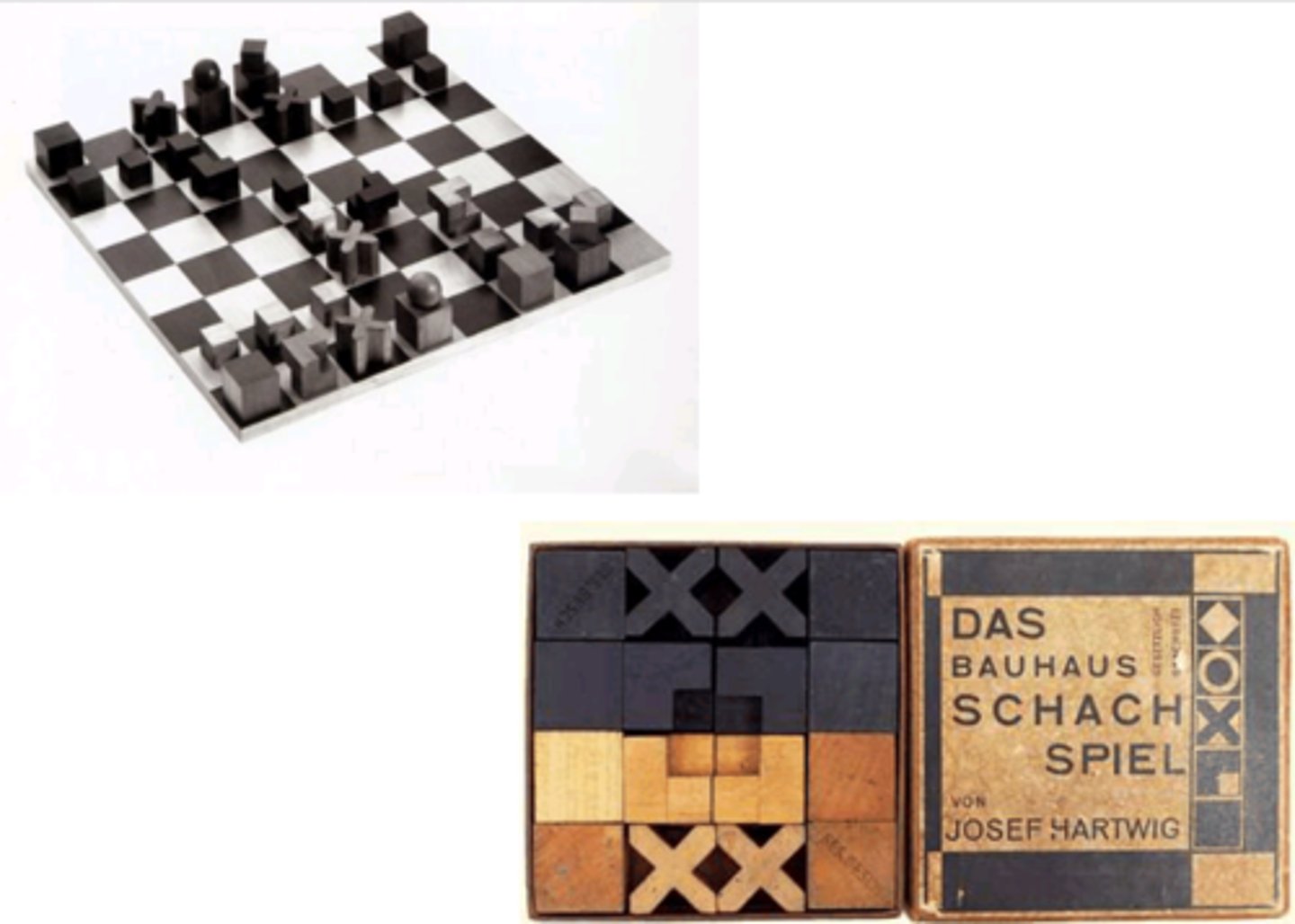
Bauhaus Building in Dessau
Walter Gropius
Architectural representation of Bauhaus principles.
